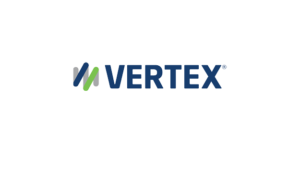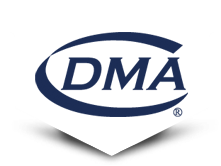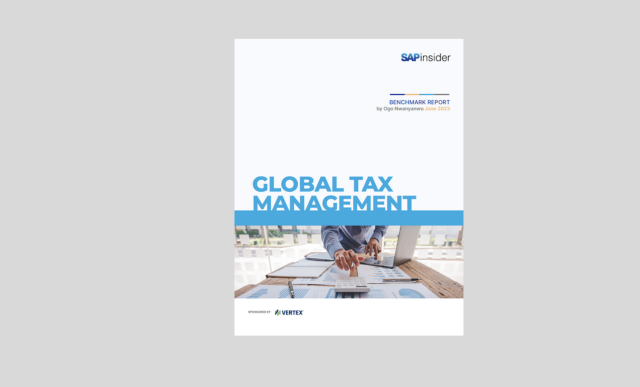Global Tax Management
Global Tax Management Webinar On-Demand
Meet the Experts
Key Takeaways
⇨ Our findings point to digital transformation and modernization of tax and finance as the top strategy for SAPinsiders to address the current state of global tax management and compliance.
⇨ Nearly half (48%) of respondent organizations said e-invoicing was a core pain point impacting an effective global tax management strategy – up from 32% last year.
⇨ A majority of survey respondents (68%) said tax professionals with a deep understanding of local tax laws and regulations are an important or very important requirement for an effective global tax management strategy.
Ogo Nwanyanwu (01:26):
Just going to wait a few minutes before I get started. Okay. Let me get started counting down.
(02:25):
Hi, and welcome to today’s webinar, reviewing our Global Tax Management Research hosted by SAP Insider, and presented by our sponsors, vertex and dma. My name is Ogo Nwanyanwu, research director for SAP Insider, and I will be hosting today’s webinar. We have just a few announcements today before we begin. This webinar is designed to be interactive between you and my and the presenter. Uh, after the presentation, we will host a, a q and A session. We invite you to submit your questions using your q and a text box, uh, within the console. We will answer as many questions as time permits, and a copy of today’s presentation will be emailed over to you following the presentation.
(03:10):
SAP Insider is the largest and fastest growing SAP membership group worldwide with more than 600,000 members across 205 countries. In terms of our agenda for today, we’re going to start with the research overview and survey snapshot, followed by our SAP Insider DART methodology for this global tax management report, uh, ending with recommendations, and then we’ll end with a live q and a session. In terms of our global tax management research, we had 150 15 respondents, uh, take our survey. Our research, uh, is focused on tax finance and IT decision makers from enterprise companies, uh, who are operating on a global basis. We surveyed organizations that are part of our, the SAP Insider community, and were interested in global tax management topics. The objective of this research was to determine the factors impacting global tax management processes and the strategies enterprise organizations are implementing to improve them.
(04:22):
We examined the drivers actions, requirements and technologies of which they’re focused as part of the global tax management process. With regards to, uh, our research demographics, we saw that, uh, a majority of our respondents were it, uh, again within, uh, the finance and tax, uh, department, followed by, uh, finance, accounting, and tax line of business, uh, professionals In terms of the market sectors that, uh, were represented, software and technology, uh, 35% followed by industrial 29%, and financial services and insurance at 15%. With regards to regions of operation, uh, with, in terms of, uh, where our respondents are, uh, you know, in terms of their impact and, and what they’re referring to with regards to their survey, uh, it was evenly distributed, uh, globally, so led by North America, of course, uh, but we saw a strong representation in terms of region of operation with regards to aj, uh, the Middle East, Europe, and Latin America.
(05:32):
In terms of the survey snapshot, we’ll start with the executive summary. Um, e-invoicing and real time reporting mandates, uh, represent the top regulatory update impacting tax teams this year, surpassing that and sales and use tax in our survey. Uh, in terms of pain points, uh, e R P application integration with global tax, uh, engine and controlling governance challenges represent the top, uh, pain points impacting our tax community. Uh, and, and that translates to our, the biggest driver for global tax management strategy in this year’s survey, which is digital transformation of tax and finance. Uh, this, this was a, a very important, uh, driver for our community and one that, uh, was present throughout the survey. Uh, this driver was followed by the demand for better reporting, analytics and visibility across transaction systems. Uh, in terms of the top actions, uh, centralizing and automating the control framework to ensure tax data consistency across all transaction systems was the top action that organ organizations were taking to, uh, support their drivers, uh, or to address their drivers. In terms of, uh, technology, we see that, uh, organizations are, uh, mostly utilizing sales and tax, uh, use sales and use tax determination tool, followed by tax localization tools and eFiling and e documentation management solutions.
(07:03):
Here again, we see, uh, the trend in pain points. Uh, last year, uh, in the trends in tax survey, we saw that, uh, indirect tax determination, uh, tax reporting, indirect tax reporting were the top two areas of pain for, uh, our global tax management community. Uh, this year we see that e R P application, uh, integration with the global tax engine controlling governance challenges, uh, increased to become the top pain points. And it seems like what we’re, what we’re witnessing is that, um, organizations are really, uh, you know, they’re looking to technology to address these challenges, uh, of global tax management and compliance processes, and they know that they must evolve to embrace new technologies, data driven insights and best practices and governance. So that’s why we see, uh, these organizations that do not have that, uh, feel challenged in these areas.
(08:02):
It also shows that organizations may be in a greater emphasis on operationalizing their global tax function to manage compliance, uh, risks more effectively. In terms of regulatory challenges impacting tax, tax teams, uh, e-invoicing and real time reporting mandates, uh, increased to the number one re regulatory challenge, and this, again, crept above, uh, that compliance and sales and use tax compliance, even though those are, uh, very well represented, uh, in our survey this year. With regards to how organizations are handling their indirect tax compliance, uh, still, er p financial systems are the dominant, uh, technology that, uh, organizations are leveraging to handle both their, uh, that and their sales and use tax. Uh, again, many are, uh, using Excel, but, uh, again, 38% this year versus 42% last year, uh, or 42% with regards to sales and use tax. In terms of a third party tax engine, we see that 44% of organizations are using a third party tax engine to address their, that, uh, their VA compliance, whereas 40% are, uh, using a third party tax engine to address their sales and use tax compliance.
(09:22):
And when we look at those, uh, survey respondents, uh, that are using a tax engine to address their, uh, indirect tax compliance, we see that, uh, predominantly Vertex, uh, followed by Thompson Reuters are the tax engines that organizations are leaning on with regards to their va, uh, and as well as their sales and use tax. Now, we move to the DART methodology of this report and research. The DART methodology is one that, uh, for those that are SAP insider, uh, alums and veterans, they should know very well, uh, drivers actions, requirements and technologies. Uh, drivers are the macro level events that are impacting an organization. They can be both internal and external and require the implementation of strategic plans, people, processes, and systems actions are the, the strategies that companies can implement, uh, to address the drivers that impact business. These are the integration of the people. Process and technology requirements are the business and process level requirements, uh, to support the strategies and technologies represent the tools, technology systems, uh, related requirements that enable business requirements and support the overall strategy.
(10:40):
With regards to our overall dart methodology here, uh, this table provides an overview of the, uh, uh, the flow in terms of drivers actions, requirements and technology. In the, uh, oncoming slides, we will explore these deeper drivers. So with regards to the top drivers impacting, uh, how organizations approach global tax management, we see that, uh, digital transformation of tax and finance, uh, was number one, and this, uh, driver increased to the top driver. Uh, and again, it, it, it makes sense as, as our respondents and survey those that, uh, took our survey. And even in conversations, uh, with regards to some of those respondents, uh, it seemed like there was a greater focus on operationalizing, um, some of their, uh, new technologies, uh, solutions, uh, really wanting to modernize and automate, uh, global tax processes. Uh, e-invoicing is a challenge for organizations, and we see that, again, organ, uh, our respondents are looking to technology to drive, uh, uh, uh, efficiency to drive accuracy.
(11:54):
And so with regards to the top driver, uh, digital transformation of tax and finance, uh, makes sense as the top driver this year. Uh, this was followed by the demand for better reporting analytics, uh, and visibility across transaction systems. Uh, again, organizations are realizing they need to invest in global management strategies that allow them to shift control of automation solutions to tax experts. And so it’s, again, it’s no surprise that we see these two as the top drivers. And with regards to growing complexity in, uh, compliance management, governance and regulations, again, i, I account that to, uh, many of our members, uh, now having more time, uh, spent with some of the changing regulatory, uh, environ regulatory updates and regulatory changes in the, uh, global tax management arena. And so now they’re, again, they’re looking to, uh, address, uh, these regulatory changes as they have spent, as they spend more time, uh, adjusting to them actions.
(12:59):
So with regards to actions, the top action to address drivers this year was to centralize and automate the control framework to ensure tax data consistency across all transactional systems and platforms. And again, organizations are looking to, uh, centralize and automate so that they can ensure, uh, uh, accuracy and consistency. Uh, trust in data is very important with regards to the global tax management process. So it’s no surprise again that, uh, as the top action organ organizations in our respondents would look to centralize and automate, uh, control frameworks just to ensure that, uh, tax data consistency, uh, was high across, uh, the organization requirements.
(13:45):
So we see that, uh, clean and harmonized master data, as well as, uh, a single source of truth, uh, where the top requirements to support the top actions. Again, it makes sense as, uh, again, a global repository of accurate data is essential for ensuring compliance with tax regulations. Uh, so again, you see these areas, uh, as the top two and increase year over year, uh, relative to our, uh, findings from last year technology. In terms of the current technology adoption, uh, to enable global tax management for our survey respondents, it starts with sales and use tax determination tool. Uh, 33% of survey respondents currently leveraged the technology as a critical element of their global tax management strategy. Uh, this was followed by tax localization tools. Uh, this represents the second most adopted technology. Uh, in our study organizations that operate in multiple countries, regions, uh, it’s important that they comply, uh, with tax.
(14:58):
Uh, it’s important that they comply, uh, with complex, uh, changing tax, uh, regulations, the framework, the patchwork of indirect tax re regulations that they have to address. And localization tools can help simplify this process for organizations by providing accurate and up to date tax determination and calculation content in a given, uh, country or region. Uh, SAP organizations specifically, those that are end users of sap, uh, can leverage SAP Cloud integration to connect with SAPs, roha, SAPs, roha Cloud, uh, with external tax engines by, uh, those provided by, for example, vertex, Thompson, Reuters, Sovos, a Valera. Uh, these are ways that organizations, uh, can, that, that, uh, have an sap uh, landscape can really, uh, implement, uh, technology to address their, uh, localization challenges and complexity of, uh, indirect tax, uh, frameworks across the various, uh, jurisdictions.
(16:07):
In terms of, uh, in terms of the next technology, the organizations are adopting, e-filing and e-document management, uh, is another area that we see an increase in terms of, uh, technology adoption this year. Uh, sap, uh, uh, documented compliance is a technology that, uh, is well regarded and one that, uh, you know, in talking to our respondents, we see that, uh, there’s strong interest in that to help them again, manage their e-filing. We see that eFiling and real-time mandates are, uh, emerged. E-invoicing emerged as, uh, a top regulatory requirement for organizations. And so we see that, uh, technologies such as e-filing, e-document management solutions are helping organizations address that regulatory issue in terms of, uh, real-time mandates, e-invoicing, and, uh, indirect tax complexity.
(17:08):
Uh, with regards to the next wave of technology adoption to enable global tax management strategies, we see that, uh, RPA of routine tax compliance processes is an area where organizations are currently evaluating. Uh, this can help, uh, you know, with this technology, organizations can automate many of their tax compliance processes, and this can help improve accuracy, uh, improve compliance, uh, provide real time insights into areas, uh, that need improvement. And so we, it’s no surprise that we see organizations really prioritizing, uh, the RPA of routine tax compliance processes, uh, with regards to, uh, enabling their global tax management strategies, uh, universal journal, single source of truth for, uh, those organizations that have, uh, uh, migrated to SAP sfor hana. Uh, again, this gets back to having that accurate, uh, consistent data that is centralized, that organizations can leverage, uh, to, uh, properly and, and, and timely, uh, uh, maintain their compliance processes with regards to global tax management.
(18:13):
So it’s no surprise that, uh, again, this is an area where organizations are looking to, uh, invest, uh, followed by. This is followed by audit management software, tax control frameworks. These are all areas, uh, that organizations, uh, are, are looking to invest, uh, especially audit management software. Uh, you know what, in conversations with, uh, SAP insiders, it’s, uh, evident that audit is, is a challenge, and one that takes away from the ability of organizations to, uh, efficiently manage their day to day operations. And so organizations are looking for ways to streamline that process, to remove the burden from their tax teams, uh, in terms of the steps that organizations can take to, uh, improve their global tax management processes, the steps, the success to do so successfully. Uh, plan, step one is plan to, uh, plan for future to future proof your global tax management, target operating model against a growing impact of workforce factors.
(19:24):
And this is important because it, again, we see that tax teams, uh, are challenged in terms of, uh, recruiting new, uh, highly skilled professionals. Uh, we see those that are aging out of tax teams. We see those that are stepping early into retirement or being pulled into more strategic, uh, roles. And so for organizations, it’s important to think, uh, in terms of the long term, how to standardize, uh, a lot of their, uh, global tax management processes, a lot of their governance, uh, so that there’s easy handoff to either, uh, new incoming, uh, tax professionals, or there’s automation that can decrease the need for, uh, you know, a, a greater tax, uh, uh, workforce. Uh, because again, organizations are seemingly challenged by, uh, their, their ability to, uh, source talent into, uh, again, to staff their, uh, tax teams. And so it’s important to factor that in as you think about your future, uh, operating model.
(20:26):
In terms of step two, uh, leverage collaboration between tax and IT to identify opportunities for tax transformation as a part of the overall sap, uh, SERANA implementation. In our survey data, we saw that, uh, our, our survey members are taking a more proactive, uh, step or proactive, uh, effort to, uh, become a part of the conversation with regards to tax. And, uh, e r p transformation, e r P migration. Uh, last year, uh, we saw that, again, many of our respondents did not feel they had a voice, or their voice was not early enough in the process. Uh, this year, we see that in the survey, uh, survey respondents appear to have more of a voice, and that voice appears to be, uh, taking place earlier in the, uh, e R P migration process. So we see that as a positive development. Uh, you know, when we think about why organizations are wanting to transform their, uh, tax and finance, uh, teams, their tax and finance functions, their tax and finance departments, it’s because they want to move, uh, the, the, the, the governance and the, and the, well, the, the role and, and the, um, the focus of that automation of tax automation, tax solutions to, uh, the tax professionals and move away from it controlling that process.
(21:48):
And so, again, this is all part of that, uh, overarching goal to move control of tax automation and tax solutions into the tax experts that have that, uh, that, that critical understanding of the, uh, challenging, uh, indirect tax framework that exists today. Uh, step three, increase investments to digitize indirect tax determination calculation reporting, filing for better alignment with overall business strategy. Again, we see that, um, organizations are, uh, as they move and think about their, uh, growth models, they think about, uh, the acquisitions that they make, the diverse, the divestitures that they make. Uh, it’s in an effort to, uh, really ramp up and align with this, uh, digital global, uh, economy. And so it’s important for organizations to make sure that, uh, their tax departments, their tax function, especially their indirect tax function, aligns with this evolving business strategy. And so that requires, uh, investment, uh, to again, uh, automate and digitize, uh, processes and tasks to remove, uh, manual work, manual rework to, uh, uh, put in processes that allow, uh, tax professionals to, uh, manage by exception.
(23:05):
Um, so these are, uh, areas that organizations are looking to increase investments, and those that are not, are, are falling behind, and therefore they’re requiring more, uh, manual work on their team. Uh, that leads to frustration with regards to, uh, their ability to, uh, execute their role. Um, and then again, we talked about organizations that are having challenges with regards to, uh, how they staff their tax teams or the ability to staff tax teams ability to recruit and attract highly, uh, skilled, uh, tax professionals. And so, again, all this feeds into, uh, wanting to make sure that you are creating a culture and an environment that is, uh, conducive and for your tax professionals, and allows them to, uh, really optimize how they, uh, execute their roles and responsibilities and, and do so efficiently. Because again, we see that, uh, even the younger tax professionals, they want to make an impact with technology.
(24:00):
So it’s important that organizations continue to make this investment final step for, uh, especially for those organizations that already, uh, have an er, sap, e r p, uh, system, uh, is explore opportunities in SAPs Han Cloud to enhance indirect tax, uh, automation in collaboration with solution partners, and to streamline realtime tax reporting. Again, uh, in terms of, uh, SAP SAPs for Honda, SAPs for hana, uh, cloud, uh, provide access to, uh, TE solutions and applications such as, uh, document and compliance that can help with, uh, e invoicing and provide, uh, automation across, um, uh, eFiling and things of that nature. So it’s important, uh, that organizations really, uh, take a look at these products, especially for those that have an e R p, uh, SAP landscape and environment. Uh, when you think about, again, the overall indirect tax challenges that organizations are facing, uh, it’s because they’re expanding their borders.
(25:05):
They’re expanding into regions, they’re expanding into new, uh, businesses and, and what have you. And so that requires a lot of, uh, local expertise, uh, with regards to those various jurisdictions to accurately, uh, and efficiently and timely, uh, maintain that indirect, uh, tax compliance, uh, posture. Uh, so, uh, again, sap, Rihanna, cloud, sap, Rihanna, uh, they, they provide, uh, uh, they provide applications that organizations can, uh, implement with regards to partners such as Vertex and, uh, Thompson, Roys, Thompson, Roys, aara Sovos, uh, whether it sales and use tax, uh, whether it be that indirect tax. Uh, these organizations provide, uh, solutions that allow for localization efforts, that allow for, uh, automation, that allow for, uh, greater accuracy and calculation and determination, uh, with regards to indirect tax. So, uh, this step is important for those organizations, uh, especially those that, uh, already are, uh, already invested, uh, in their sap, uh, E r p landscape.
(26:20):
Next, we’ll move to questions. As a reminder, you can participate in the q and a session by typing your question into the q and a text box and click submit. So, I will start with two questions, uh, that were emailed to me prior to this presentation. Uh, the first question, uh, talked about again, uh, asked why in, in the research that I, I thought, uh, organizations, uh, were really challenged by e-invoicing and real time mandates and why, uh, that was such a, uh, that saw such a big jump with regards to, uh, versus VA and, uh, sales and use tax. And really it’s because, uh, of some of the regulation that’s going on in Europe, uh, specifically, but all around the world, uh, we see that, uh, in Europe, uh, more and more countries, I believe at this point, 16, have implemented, uh, real time, um, mandates and e-invoicing, and we see another, uh, uh, we see another, uh, set of countries, uh, expected to adopt, uh, real time mandates and real time e-invoicing.
(27:37):
So, uh, again, as organizations understand the impact of these oncoming regulations, we see that, uh, it’s starting to impact, uh, how tax teams and the workloads of tax teams, right, and, and their ability to get up to speed with regards to this ongoing, uh, increase in re indirect tax regulatory framework, especially in Europe. Um, we, you know, we see this again as well in us with sales and use tax, uh, following the Wayfair, uh, decision. Uh, but again, in general, globally, uh, coming off the pandemic where, uh, governments and, and revenue authorities are looking to, uh, maximize and optimize their ability to collect tax revenue, uh, these, uh, governments and, and regulatory authorities have invested in technology to, uh, review and, uh, look at invoices, uh, sometimes in real time, sometimes as soon as the transaction occurs. So all you know, whether it be the, the regulation or whether it be the capacity of these governments and, uh, revenue authorities to collect on that tax, uh, as organizations and the, and, and as the global economy becomes more digital, we see that organizations have to respond and they have to evolve. And again, uh, in terms of e-invoicing, uh, we see that, uh, regulation, especially in Europe, increasing more and more. And again, that’s translating to, uh, the workloads of tax teams.
(29:02):
The second question, uh, referred to digital transformation and tax. And, uh, again, in the report, uh, this was the number one driver, uh, uh, and, and this, this driver, uh, increased, uh, relative to last year’s survey, uh, last year, we saw that, uh, growing complexity, uh, growing complexity, growing regulation was the number one driver this year. Uh, it’s digital transformation, um, of tax and finance. And again, this speaks to, uh, the last point, uh, that I’m, that I reference in terms of the impact of the, the complex regulatory environment organizations as they get up to speed, as the, uh, as our respondents, as our community get up to speed on these regulations, they’re understanding the importance of technology and where they or their current organizations may be falling short and, and, uh, may need investment in. So again, you, it’s no, it’s no surprise that we see that, uh, our survey respondents, uh, would see this as a number one driver.
(30:07):
Um, many, you know, across, uh, our surveys within the financial management space, whether it’s the SAPs for hana, uh, finance and Central Finance Survey, whether it’s the financial close survey, uh, whether it’s the, uh, cash management survey, uh, organizations within our community are increasingly, uh, moving to SAPs for hana, uh, ahead of the maintenance state and just, and less about the maintenance state, but more so because they want to increase their capacity to, uh, be more op operationally efficient across their finance and accounting processes. And as they do that, uh, it’s important for them to consider, uh, specific, uh, core business processes here. Uh, with regards to this research, we see that global tax management is the area that, uh, organizations are really having to, uh, think about and plan and invest in, and really have conversations, uh, with their tax teams in terms of how to effectuate best practices, how to, uh, create, uh, and, and modernize and redesign systems so that they’re more efficient, uh, and, and capable of addressing the regulatory framework, uh, that they must, that they’re challenged by today.
(31:22):
So that is in terms of digital transformation of tax and finance, again, this is a consistent theme, um, across, uh, our surveys. And again, this speaks to, uh, the need, uh, for organizations to one, uh, automate to have governance, uh, and three, create that visibility, uh, whether it be, uh, through analytics or just, uh, through end to end automation, uh, that allows ’em to, uh, see the orchestration of, of core finance processes. Uh, this is an area where, uh, organizations are really investing and, and our survey respondents, uh, likewise are seeing the importance of this. And then, and thus you see that importance increase in, in our survey response, uh, for this, uh, for, for this research. Unfortunately, uh, that is all the time we have for today. Uh, if we did not get to your question, someone will follow up with you within the next few business days. Thank you for attending today’s webinar. Uh, shortly after the life presentation, you’ll receive an email reminder to access the presentation on demand. On behalf of SAP Insider and our sponsors, uh, vertex and dma, thank you for your time and have a great day.








